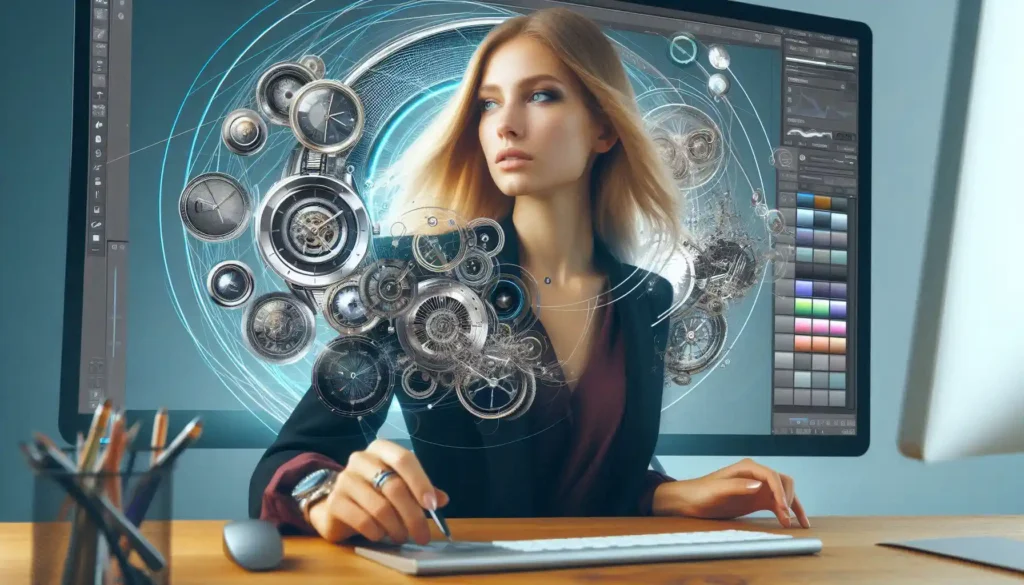Wait, You’re Telling Me Motion Design Doesn’t Start with the Motion? Okay, imagine this: you’re all set to create an epic motion design piece. The client says, “We want it to POP! We want it to BANG!”. You stare at the blank screen like it’s about to animate itself. Surprise, surprise, motion design doesn’t just start with movement. In fact, that would be like starting a road trip without knowing where you’re going. You might end up in a ditch… or worse, looping gifs for eternity.

2. Storyboarding is the GPS of Motion Design
Here’s the deal: storyboarding is like Google Maps for animators. It’s what prevents you from crashing into a creative dead end. You lay out your scenes, get a feel for the flow, and then… then the magic happens. Without a storyboard, you’re just animating blindfolded, hoping to stumble across a coherent sequence. Spoiler alert: that never ends well. Ever seen an animation that feels like it’s having an identity crisis? That’s what happens when someone skips storyboarding.
3. It’s Like Sketching Before Building a Skyscraper
You wouldn’t build a skyscraper by throwing bricks at each other and hoping they land perfectly stacked, right? So why try to piece together motion design without first sketching out your visual game plan? Storyboarding is the architect of your animation. It’s where you figure out if that massive explosion in the background makes sense, or if your cute bouncing character accidentally looks like it’s in a bounce house disaster. You get to see it before you have to make it. Trust me, your future self will thank you.
4. Storyboarding Saves You from the “What Was I Thinking?” Moments
Remember that time you thought it would be genius to animate 300 flying cats for a product ad? Yeah, storyboarding would’ve nipped that in the bud real quick. Storyboarding is the reality check of motion design. It’s that moment when you look at your rough sketches and think, “Okay, maybe flying cats and lasers and fireworks is a bit much for a toothpaste ad.” It’s like having a creative therapist—talking you through the chaos.
5. Communication for Creatives: Less Confusion, More Action
When you’re working on a motion design team, trying to describe what you want without a storyboard is like playing a game of telephone… except by the end, nobody knows what anyone’s talking about. “Storyboards save you from that madness. It’s like holding up a sign that says, “THIS IS WHAT I MEANT.” It helps everyone visualize the vision before your design team starts guessing your deepest artistic desires.
6. Storyboarding Isn’t Just for Control Freaks—But They’ll Love It
If you’re the type of person who loves structure, storyboarding will be your new best friend. But even if you’re more of a “let’s see where this goes” type, you’ll still appreciate that storyboarding gives you the freedom to explore crazy ideas… without committing to them. It’s like dating your animation ideas before you marry them. No need to jump into a 50-frame commitment without testing the waters first!
7. The Secret to Saving Time (And Your Sanity)
Picture this: you’ve spent 15 hours animating a sequence, only to realize it makes absolutely no sense. It’s like realizing halfway through a marathon that you’re running in the wrong direction. With a storyboard, you can catch those mistakes early, before you’re buried under layers of keyframes and motion paths. Storyboarding is the ultimate time-saver—and considering time is money in this business, you can’t afford not to use it.
8. Think of Storyboarding Like a Comic Book for Your Animation
If animation is the movie, then storyboarding is the comic book that comes before it. You get to break down your story into digestible, visual chunks—scene by scene, frame by frame. It’s like you’re creating the ultimate sneak peek of your animation masterpiece. And let’s be real: who doesn’t want to see their work laid out like a superhero comic before it even moves?
9. Collaboration Without Headaches
In a team setting, storyboards are the universal translator. You’ve got the animator, the sound designer, the client, and the guy who still doesn’t really know what motion design is, all trying to work together. The storyboard says, “Hey, don’t worry, I’ve got this.” Everyone can see the same vision, which means less back-and-forth confusion and fewer revisions where you end up hating each other.
10. Storyboarding Helps You Think Like a Director, Not Just a Designer
Here’s the kicker: storyboarding forces you to think beyond design. You start thinking about camera angles, pacing, and scene transitions like a real filmmaker. Suddenly, you’re not just a designer—you’re a director. Cue the megaphone and beret! You’re telling a story, and storyboarding gives you the tools to map out that story in the most cinematic way possible.
11. So, Does Storyboarding Actually Make You a Better Designer?
Short answer: yes. Long answer: absolutely yes. Storyboarding makes you plan, and planning makes you more efficient, creative, and, dare I say, professional. So next time someone asks if storyboarding is really necessary in motion design, just smile and say, “Well, it’s the difference between watching a masterpiece and watching a trainwreck.”
Got questions or ready to bring your next motion design project to life? Whether you’re curious about our process or need a custom quote, we’re here to help! Reach out to our team today, and let’s collaborate on creating stunning animations that captivate and convert. Don’t be shy—contact us now, and let’s get things moving!”

